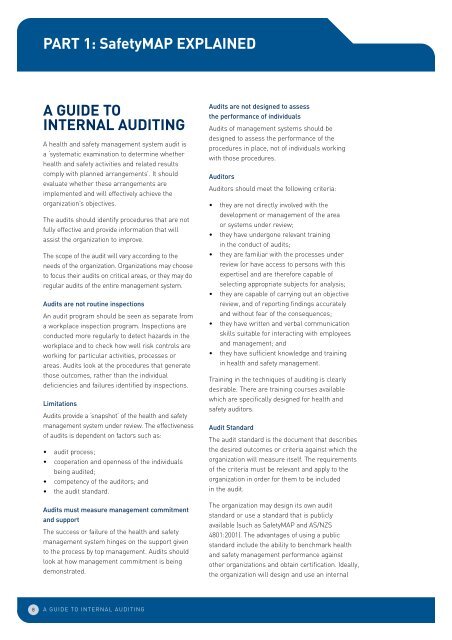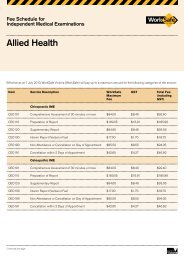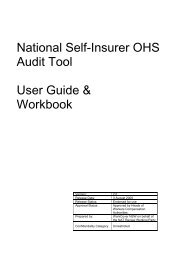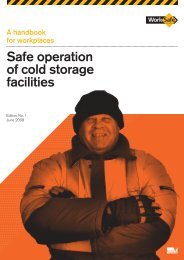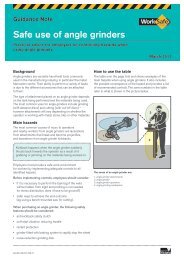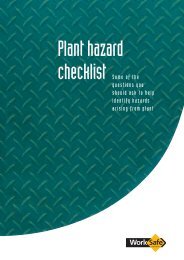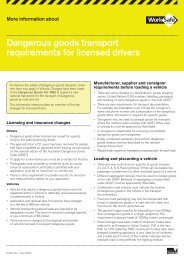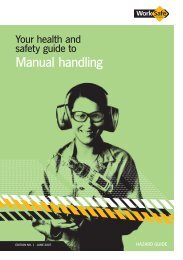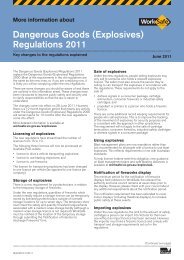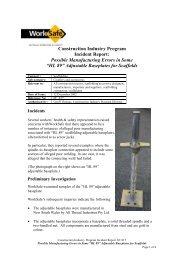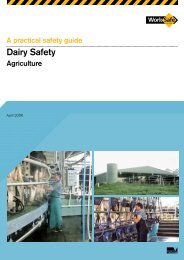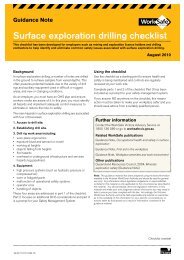SafetyMAP:Auditing Health & Safety ... - WorkSafe Victoria
SafetyMAP:Auditing Health & Safety ... - WorkSafe Victoria
SafetyMAP:Auditing Health & Safety ... - WorkSafe Victoria
- No tags were found...
You also want an ePaper? Increase the reach of your titles
YUMPU automatically turns print PDFs into web optimized ePapers that Google loves.
PART 1: <strong><strong>Safety</strong>MAP</strong> EXPLAINEDA GUIDE TOINTERNAL AUDITINGA health and safety management system audit isa ‘systematic examination to determine whetherhealth and safety activities and related resultscomply with planned arrangements’. It shouldevaluate whether these arrangements areimplemented and will effectively achieve theorganization’s objectives.The audits should identify procedures that are notfully effective and provide information that willassist the organization to improve.The scope of the audit will vary according to theneeds of the organization. Organizations may chooseto focus their audits on critical areas, or they may doregular audits of the entire management system.Audits are not routine inspectionsAn audit program should be seen as separate froma workplace inspection program. Inspections areconducted more regularly to detect hazards in theworkplace and to check how well risk controls areworking for particular activities, processes orareas. Audits look at the procedures that generatethose outcomes, rather than the individualdeficiencies and failures identified by inspections.LimitationsAudits provide a ‘snapshot’ of the health and safetymanagement system under review. The effectivenessof audits is dependent on factors such as:• audit process;• cooperation and openness of the individualsbeing audited;• competency of the auditors; and• the audit standard.Audits must measure management commitmentand supportThe success or failure of the health and safetymanagement system hinges on the support givento the process by top management. Audits shouldlook at how management commitment is beingdemonstrated.Audits are not designed to assessthe performance of individualsAudits of management systems should bedesigned to assess the performance of theprocedures in place, not of individuals workingwith those procedures.AuditorsAuditors should meet the following criteria:• they are not directly involved with thedevelopment or management of the areaor systems under review;• they have undergone relevant trainingin the conduct of audits;• they are familiar with the processes underreview (or have access to persons with thisexpertise) and are therefore capable ofselecting appropriate subjects for analysis;• they are capable of carrying out an objectivereview, and of reporting findings accuratelyand without fear of the consequences;• they have written and verbal communicationskills suitable for interacting with employeesand management; and• they have sufficient knowledge and trainingin health and safety management.Training in the techniques of auditing is clearlydesirable. There are training courses availablewhich are specifically designed for health andsafety auditors.Audit StandardThe audit standard is the document that describesthe desired outcomes or criteria against which theorganization will measure itself. The requirementsof the criteria must be relevant and apply to theorganization in order for them to be includedin the audit.The organization may design its own auditstandard or use a standard that is publiclyavailable (such as <strong><strong>Safety</strong>MAP</strong> and AS/NZS4801:2001). The advantages of using a publicstandard include the ability to benchmark healthand safety management performance againstother organizations and obtain certification. Ideally,the organization will design and use an internal8A GUIDE TO INTERNAL AUDITING


